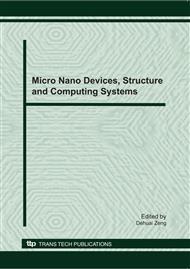p.363
p.371
p.377
p.383
p.388
p.393
p.399
p.406
p.412
The Application of Randomized Hough Transform in Ellipse Image Detection
Abstract:
As the traditional Hough transform has such defects as large storage space and long computing time in ellipse detection, an improved randomized ellipses detection method based on least squares was presented, which utilizes the least square approach to fit the ellipse and combines both of the advantages of the random Hough transform and the least square. By setting appropriate distance threshold of the candidate ellipse and the threshold of edge points, the method of ellipse detection decreases the number of random sampling and the invalid calculation of cumulation in the process of Hough transform. The results show that the method doesn’t require large storage space, has good ability to overcome the noise and realizes the fast detection for the single ellipse and defective ellipse.
Info:
Periodical:
Pages:
388-392
Citation:
Online since:
December 2010
Authors:
Price:
Сopyright:
© 2011 Trans Tech Publications Ltd. All Rights Reserved
Share:
Citation:


